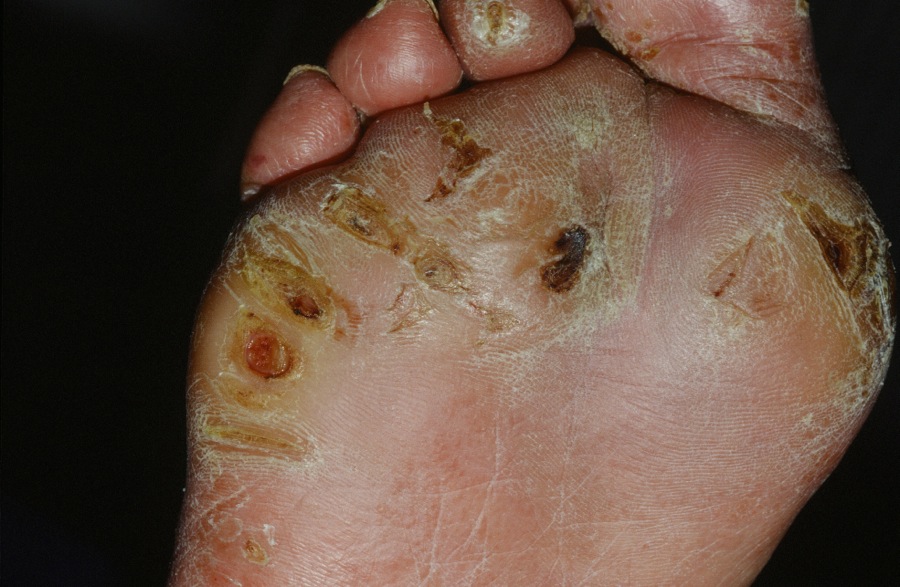
Diabetic foot ulcers (DFU) or mal perforans ulcers are a significant problem and cost to health care. Approximately 25% of people with diabetes will experience at least one DFU in their lifetime. DFUs proceed lower limb amputation 85% of the time. DFUs can be divided into neuropathic, ischemic, and neuroischemic foot ulcers. When ischemia is involved, the prognosis is less good. Secondary infection is common.
The typical location is an ulcer over the 1st or 5th metatarsal on the plantar aspect of the foot. The patient is often a diabetic with peripheral neuropathy. Callus formation is often an initial finding in the patient with diabetic neuropathy. An ulcer is formed after repeated trauma to the pressure areas of the sole in the setting of decreased sensation.
One study that cultured DFUs found Pseudomonas aeruginosa in 35% of patients followed by Staphylococcus aureus in 19%, E. coli 16%, Klebsiella 6%, MRSA 6% and Candida albicans in 3%. Age > 65, ulcer size > 2 cm2 and HbA1c > 7% were associated with a positive culture. Whether a positive culture represents merely colonization vs infection requires clinical correlation.
Diabetics should have their feet examined routinely. All calluses should be removed. Foot or gait abnormalities or poorly fitting shoes should all be considered and addressed to prevent focal pressure points that can lead to ulceration.
Homepage | Who is Dr. White? | Privacy Policy | FAQs | Use of Images | Contact Dr. White